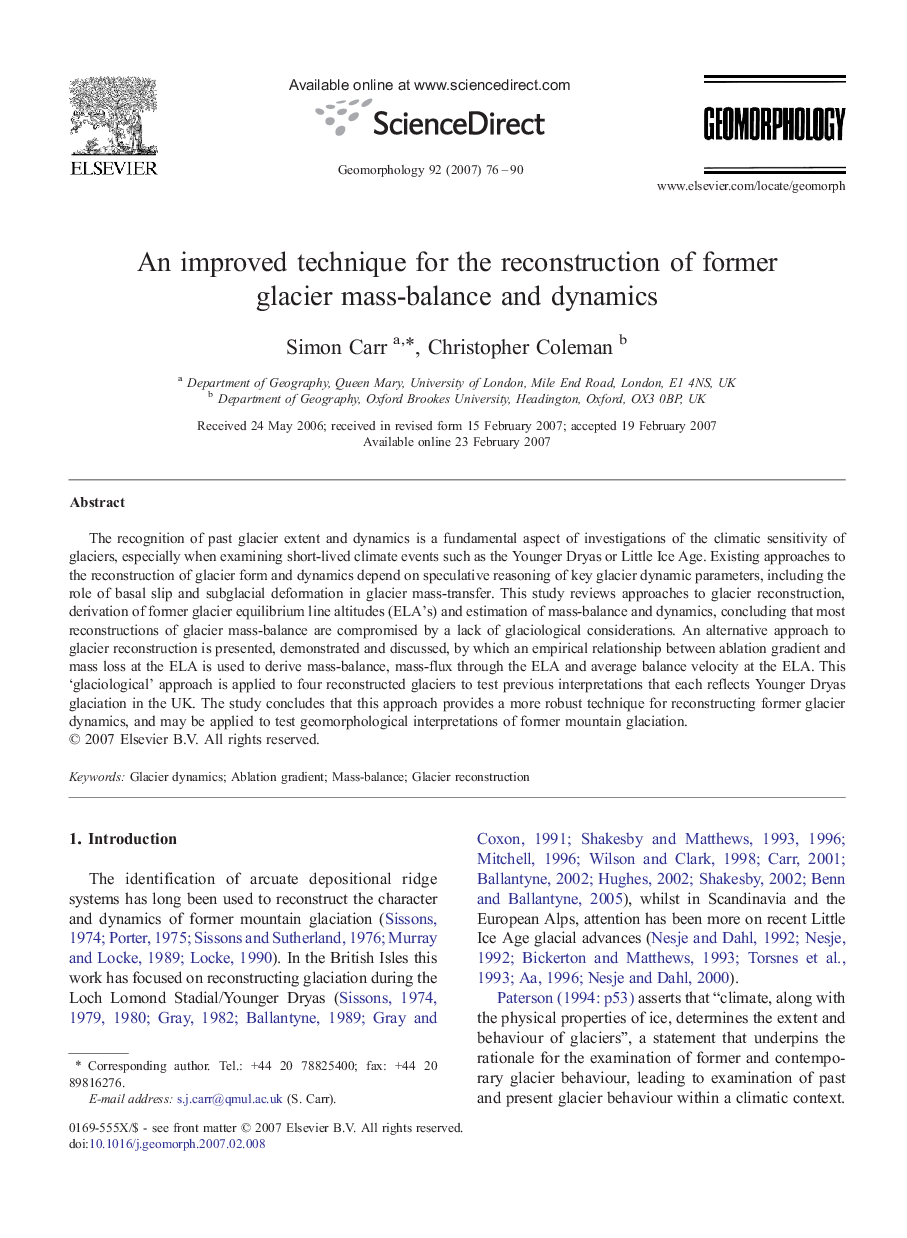| Article ID | Journal | Published Year | Pages | File Type |
|---|---|---|---|---|
| 4687107 | Geomorphology | 2007 | 15 Pages |
The recognition of past glacier extent and dynamics is a fundamental aspect of investigations of the climatic sensitivity of glaciers, especially when examining short-lived climate events such as the Younger Dryas or Little Ice Age. Existing approaches to the reconstruction of glacier form and dynamics depend on speculative reasoning of key glacier dynamic parameters, including the role of basal slip and subglacial deformation in glacier mass-transfer. This study reviews approaches to glacier reconstruction, derivation of former glacier equilibrium line altitudes (ELA's) and estimation of mass-balance and dynamics, concluding that most reconstructions of glacier mass-balance are compromised by a lack of glaciological considerations. An alternative approach to glacier reconstruction is presented, demonstrated and discussed, by which an empirical relationship between ablation gradient and mass loss at the ELA is used to derive mass-balance, mass-flux through the ELA and average balance velocity at the ELA. This ‘glaciological’ approach is applied to four reconstructed glaciers to test previous interpretations that each reflects Younger Dryas glaciation in the UK. The study concludes that this approach provides a more robust technique for reconstructing former glacier dynamics, and may be applied to test geomorphological interpretations of former mountain glaciation.
